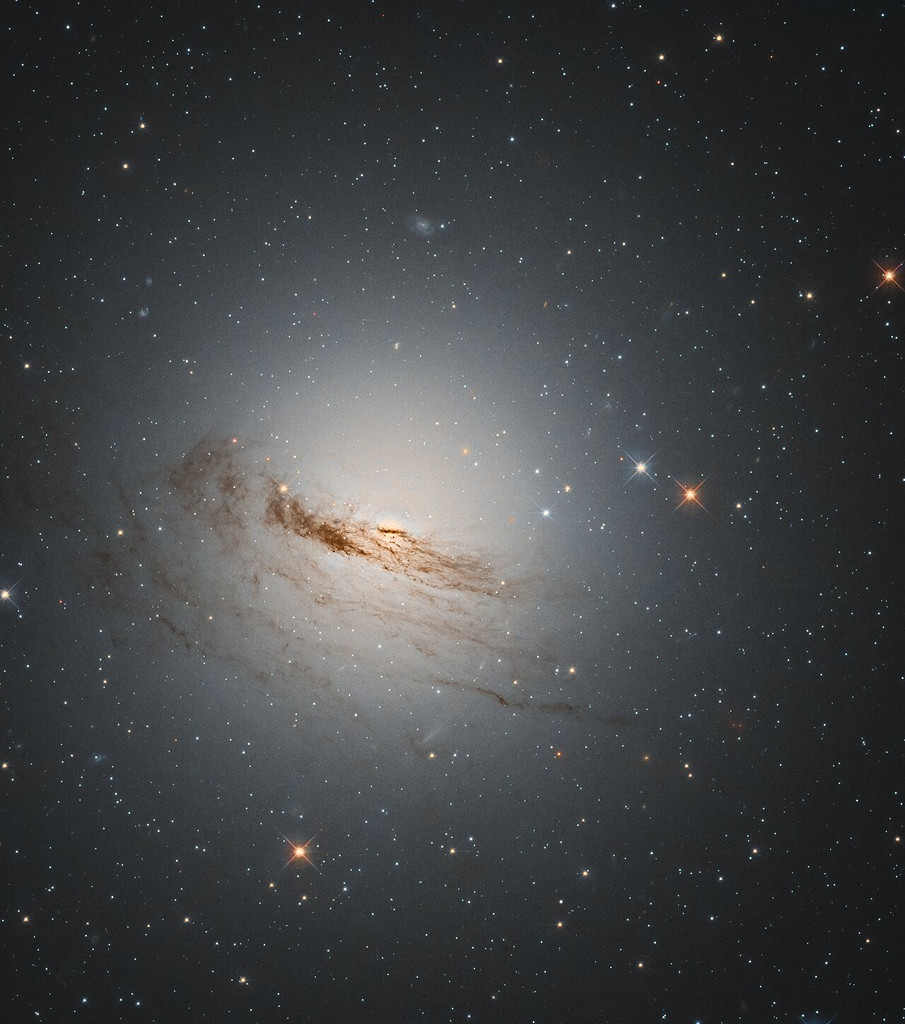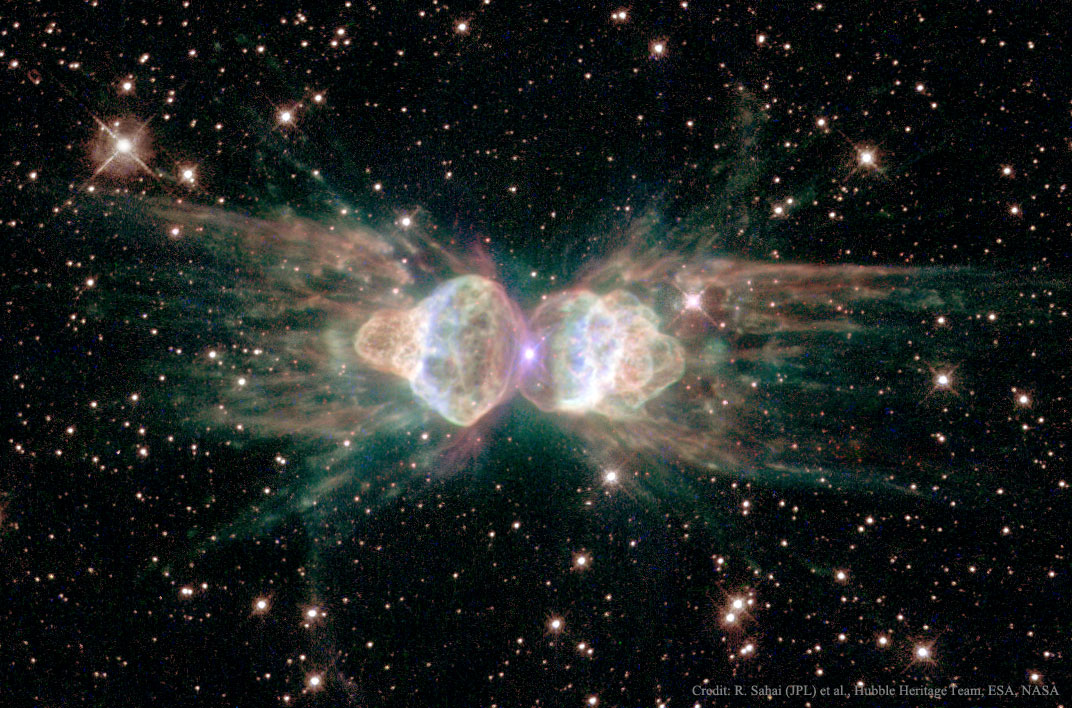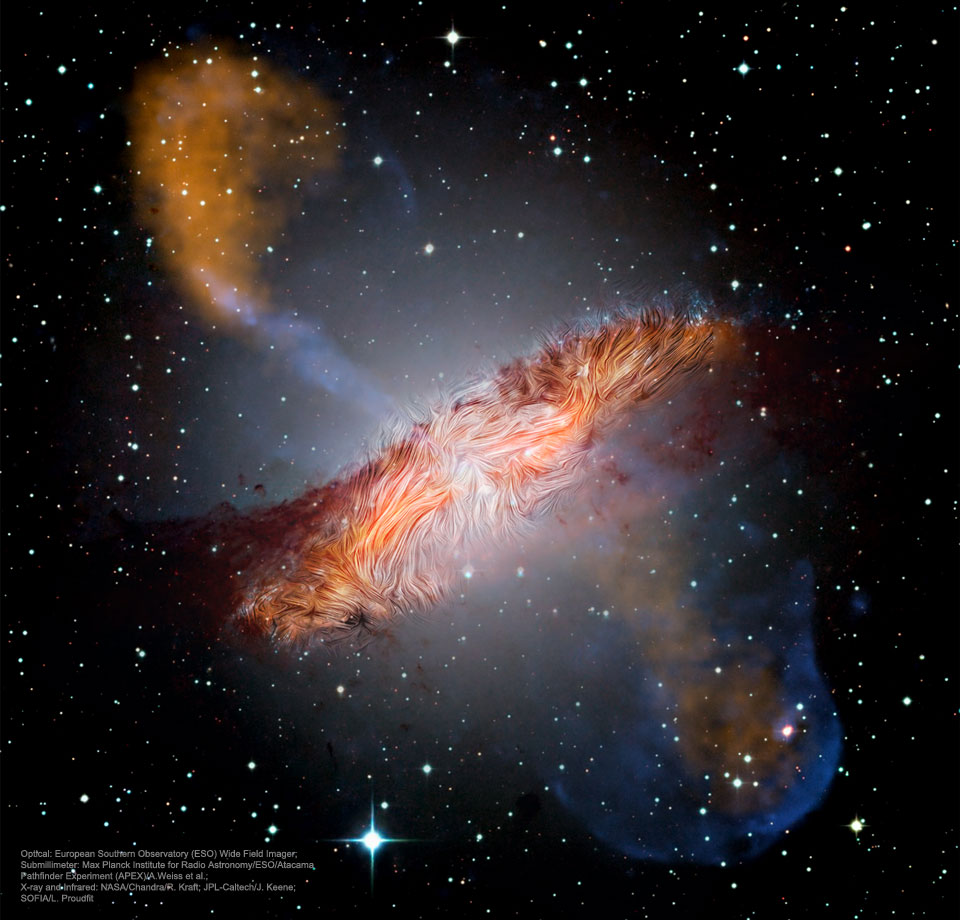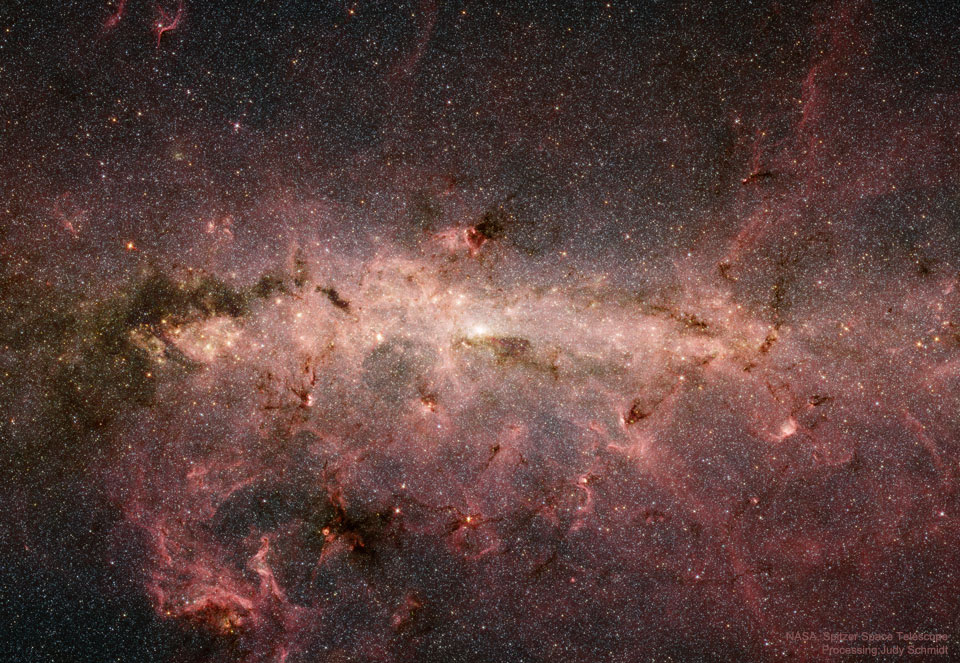Nombre total de pages vues
26/04/2021
MINERAUX - La marcassite, une cousine de la pyrite
ASTRONOMY - Threads of NGC 1947
2021 April 26
Image Credit: ESA/Hubble & NASA, D. Rosario; Acknowledgment: L. Shatz
Explanation: Found in far southern skies, deep within the boundaries of the constellation Dorado, NGC 1947 is some 40 million light-years away. In silhouette against starlight, obscuring lanes of cosmic dust thread across the peculiar galaxy's bright central regions. Unlike the rotation of stars, gas, and dust tracing the arms of spiral galaxies, the motions of dust and gas don't follow the motions of stars in NGC 1947 though. Their more complicated disconnected motion suggest this galaxy's visible threads of dust and gas may have come from a donor galaxy, accreted by NGC 1947 during the last 3 billion years or so of the peculiar galaxy's evolution. With spiky foreground Milky Way stars and even more distant background galaxies scattered through the frame, this sharp Hubble image spans about 25,000 light-years near the center of NGC 1947.
25/04/2021
ASTRONOMY - Planetary Nebula Mz3: The Ant Nebula
2021 April 25
Image Credit: R. Sahai (JPL) et al., Hubble Heritage Team, ESA, NASA
Explanation: Why isn't this ant a big sphere? Planetary nebula Mz3 is being cast off by a star similar to our Sun that is, surely, round. Why then would the gas that is streaming away create an ant-shaped nebula that is distinctly not round? Clues might include the high 1000-kilometer per second speed of the expelled gas, the light-year long length of the structure, and the magnetism of the star featured here at the nebula's center. One possible answer is that Mz3 is hiding a second, dimmer star that orbits close in to the bright star. A competing hypothesis holds that the central star's own spin and magnetic field are channeling the gas. Since the central star appears to be so similar to our own Sun, astronomers hope that increased understanding of the history of this giant space ant can provide useful insight into the likely future of our own Sun and Earth.
23/04/2021
ASTRONOMY - Flying Over the Earth at Night II
2021 April 23
Video Credit: NASA, Gateway to Astronaut Photography, ISS Expedition 53; Music: The Low Seas (The 126ers)
Explanation: Recorded during 2017, timelapse sequences from the International Space Station are compiled in this serene video of planet Earth at Night. Fans of low Earth orbit can start by enjoying the view as green and red aurora borealis slather up the sky. The night scene tracks from northwest to southeast across North America, toward the Gulf of Mexico and the Florida coast. A second sequence follows European city lights, crosses the Mediterranean Sea, and passes over a bright Nile river in northern Africa. Seen from the orbital outpost, erratic flashes of lightning appear in thunder storms below and stars rise above the planet's curved horizon through a faint atmospheric airglow. Of course, from home you can always check out the vital signs of Planet Earth Now.
22/04/2021
ASTRONOMY - Planet Earth at Twilight
2021 April 22
Image Credit: ISS Expedition 2 Crew, Gateway to Astronaut Photography of Earth, NASA
Explanation: No sudden, sharp boundary marks the passage of day into night in this gorgeous view of ocean and clouds over our fair planet Earth. Instead, the shadow line or terminator is diffuse and shows the gradual transition to darkness we experience as twilight. With the Sun illuminating the scene from the right, the cloud tops reflect gently reddened sunlight filtered through the dusty troposphere, the lowest layer of the planet's nurturing atmosphere. A clear high altitude layer, visible along the dayside's upper edge, scatters blue sunlight and fades into the blackness of space. This picture was taken in June of 2001 from the International Space Station orbiting at an altitude of 211 nautical miles. But you can check out the vital signs of Planet Earth Now.
21/04/2021
ASTRONOMY - Centaurus A's Warped Magnetic Fields
2021 April 21
Image Credit: Optical: European Southern Observatory (ESO) Wide Field Imager; Submillimeter: Max Planck Institute for Radio Astronomy/ESO/Atacama Pathfinder Experiment (APEX)/A.Weiss et al; X-ray and Infrared: NASA/Chandra/R. Kraft; JPL-Caltech/J. Keene; Text: Joan Schmelz (USRA)
Explanation: When galaxies collide -- what happens to their magnetic fields? To help find out, NASA pointed SOFIA, its flying 747, at galactic neighbor Centaurus A to observe the emission of polarized dust -- which traces magnetic fields. Cen A's unusual shape results from the clash of two galaxies with jets powered by gas accreting onto a central supermassive black hole. In the resulting featured image, SOFIA-derived magnetic streamlines are superposed on ESO (visible: white), APEX (submillimeter: orange), Chandra (X-rays: blue), and Spitzer (infrared: red) images. The magnetic fields were found to be parallel to the dust lanes on the outskirts of the galaxy but distorted near the center. Gravitational forces near the black hole accelerate ions and enhance the magnetic field. In sum, the collision not only combined the galaxies’ masses -- but amplified their magnetic fields. These results provide new insights into how magnetic fields evolved in the early universe when mergers were more common.
20/04/2021
ASTRONOMY - Ingenuity: First Flight over Mars
2021 April 20
Video Credit: NASA, JPL-Caltech, ASU, MSSS
Explanation: What's the best way to explore Mars? Perhaps there is no single best way, but a newly demonstrated method shows tremendous promise: flight. Powered flight has the promise to search vast regions and scout out particularly interesting areas for more detailed investigation. Yesterday, for the first time, powered flight was demonstrated on Mars by a small helicopter named Ingenuity. In the featured video, Ingenuity is first imaged by the Perseverance rover sitting quietly on the Martian surface. After a few seconds, Ingenuity's long rotors begin to spin, and a few seconds after that -- history is made as Ingenuity actually takes off, hovers for a few seconds, and then lands safely. More tests of Ingenuity's unprecedented ability are planned over the next few months. Flight may help humanity better explore not only Mars, but Saturn's moon Titan over the next few decades.
19/04/2021
MINERAUX - Le sélénite, une pierre de lune
ASTRONOMY - The Galactic Center in Infrared
2021 April 19
Image Credit: NASA, JPL-Caltech, Spitzer Space Telescope, Susan Stolovy (SSC/Caltech) et al.; Reprocessing: Judy Schmidt
Explanation: What does the center of our galaxy look like? In visible light, the Milky Way's center is hidden by clouds of obscuring dust and gas. But in this stunning vista, the Spitzer Space Telescope's infrared cameras, penetrate much of the dust revealing the stars of the crowded galactic center region. A mosaic of many smaller snapshots, the detailed, false-color image shows older, cool stars in bluish hues. Red and brown glowing dust clouds are associated with young, hot stars in stellar nurseries. The very center of the Milky Way has recently been found capable of forming newborn stars. The galactic center lies some 26,700 light-years away, toward the constellation Sagittarius. At that distance, this picture spans about 900 light-years.
18/04/2021
SANTé/MEDECINE - Cancer rare : ces symptômes passent souvent inaperçus... (3/3)
Le cancer des voies biliaires : un cancer silencieux aux conséquences graves Lorsque le cancer des voies biliaires progresse, il peut bloque...

-
2022 September 26 All the Water on Planet Earth Illustration Credit: Jack Cook, Adam Nieman, Woods Hole Oceanographic Institution ; Data ...
-
2025 January 14 North Star: Polaris and Surrounding Dust Image Credit & Copyright: Davide Coverta Explanation: Why is Polaris called ...






